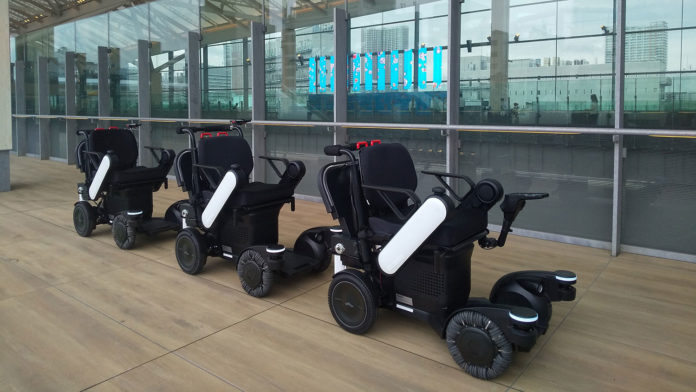Travel by air or train for people with health issues, handicaps, disabilities, or special needs, can be challenging. To solve this problem, Panasonic Corporation, in association with JR East Group, launches a mobility service trial using Panasonic’s robotic mobility device. The trials are scheduled to take place from July 2020 to September 2020, at Takanawa Gateway railway station, which opened in March 2020.
The robotic mobility device – an electric wheelchair with an autonomous tracking function can navigate busy stations to help passengers with mobility issues get the trains. It is capable of independently detecting and avoiding people and obstacles and follows a pre-determined leader to a common destination.
The trailing uses three units of electric wheelchairs with the leading robot controlled by a station employee, and the second and third robots following behind it automatically in a column.
Panasonic’s robotic mobility devices are equipped with an automatic braking system that enables them to slow down or stop completely when an obstacle is detected, as well as an autonomous tracking function that ensures that the robots at the rear follow the lead robot. If someone steps in front of a robot, the rear robot will automatically make a temporarily stop as its sensor detects the person, and will only move again once it recognizes the way is cleared.
The aim of the experiment is to provide a safe and efficient mobile service to the visitors of the station’s new Partner Base Takanawa Gateway Station facility.
Through this test, Panasonic will work to raise their level of customer service by implementing the latest technology to meet the new needs of users, thus achieving unprecedented mobility experiences.
